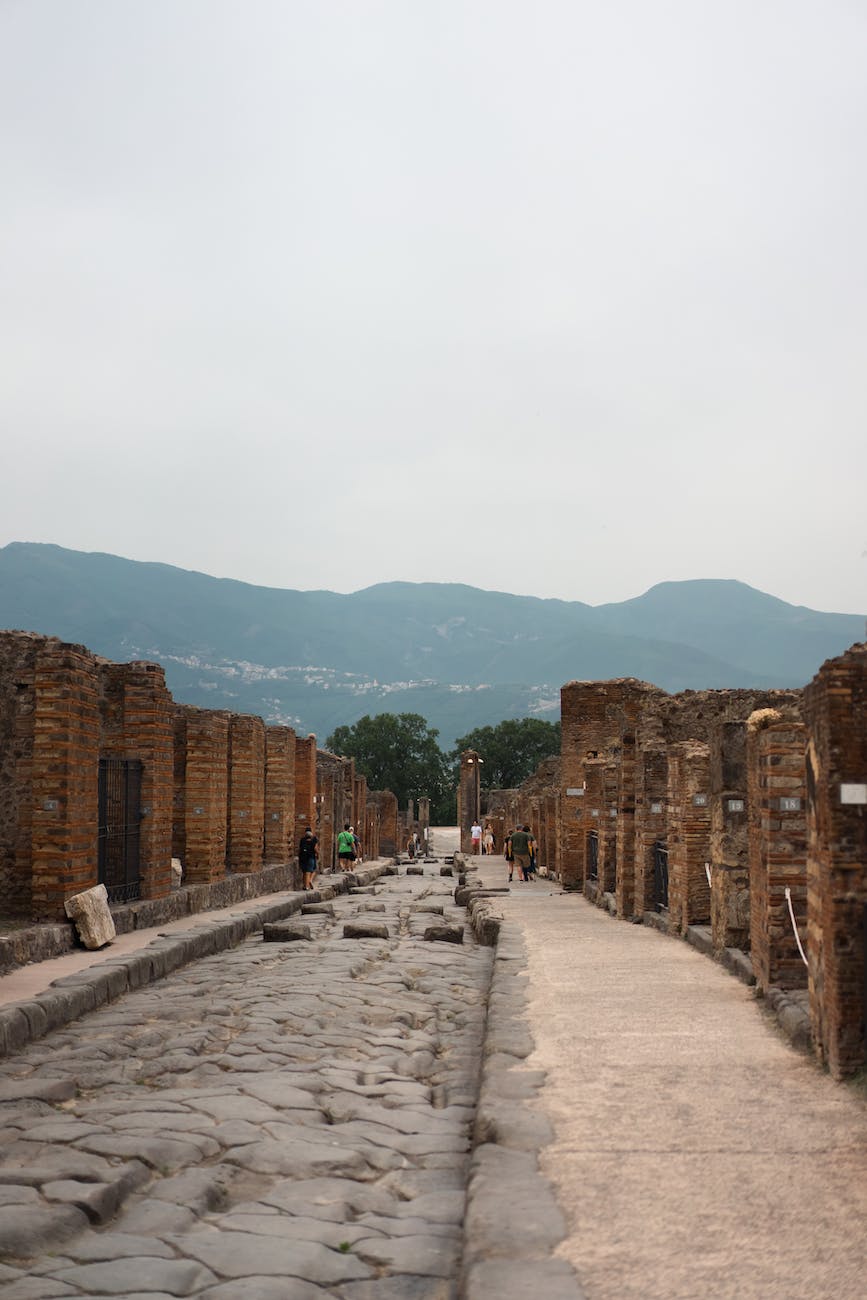The xtraWinexperience brings us to Pompoeii. When you read the word Pompeii, your mind may instantly flash to your knowledge of the history of this tragic place. One of the largest and most important Roman cities, Pompeii had the misfortune of being near Mount Vesuvius.
In 79 CE, that volcano erupted. The eruption was so fast that it destroyed the ancient city before many of its citizens had the opportunity to escape.
Today, the site of Pompeii sits as a relic of this ancient eruption. Ruins and frescoes still exist for those with an interest in archaeology. Sadly, the legacy of Pompeii will always be inextricably linked to this volcanic eruption.
However, very few know that Pompeii was one of the earliest and most important wine-producing cities in the Roman Empire.
In fact, Pompeii’s history of wine is so important that the city can lay claim to playing a crucial role in the development of the Italian wine industry.
The Wines of Pompeii
In this article, we will therefore explore the often-underappreciated wine history of Pompeii, which is as fascinating as the eruption that so many already know it for.

Scholars of ancient texts will find many mentions of Campania, where Pompeii was situated. The great historian Pliny the Elder wrote of the “vine-growing hills and noble wines of Campania” during its pomp. And even before the arrival of the Romans, Pompeii was respected amongst the ancient Greeks, who many see as the first true innovators of wine. During the era of the Ancient Greeks, Campania was known as Oenotria, which roughly translates to “the land of vines.”
When we say that Pompeii was important to the earliest wine industries, these historical references demonstrate why.
Wine and Economy
Both locally-produced and imported wines were enjoyed in the city, with the fertile soils surrounding Mount Vesuvius playing a crucial role in producing the city’s best wines.
That certainly demonstrates the balance between risk and reward when living near a volcano.
Pompeii eventually fell victim to a force of nature that it had no control over. But before the famous eruption, the city’s winemakers benefitted immensely from the volcanic soil in the region. It’s a similar risk versus reward situation that producers working near Mount Etna face in the modern era. Thankfully, we have access to technology that monitors volcanic activity, meaning a reoccurrence of Pompeii’s tragic story is unlikely.
Returning to Pompeii’s wine history, the city’s ruins show us that many villas were situated in the surrounding countryside. Historians believe that these ruins demonstrate that many wine producers dotted around Pompeii, most of whom would have created wines for the town’s market. Even the city’s inns were known for creating their own vintages. This gives us an early insight into the variety of the Italian wine industry and perhaps acting as a forebear for the industry as we see it today.
The House of Amarantus
Perhaps one of the most exciting things about Pompeii’s wines is that archaeologists can often identify the specific areas of the city they came from. In the ancient era, wines were sold in amphorae, unique wine vessels. Even when these amphorae aren’t labelled, scholars can determine approximately where they came from as each producer created its own. The shapes and materials used for amphorae varied from place to place, allowing archaeologists to roughly determine where each wine came from.
It’s from these studies that we learn of how rich the wine trade was in Pompeii. And much of it centred around a large store named The House of Amarantus. Excavations of this ruined shop have revealed many amphorae. So far, archaeologists have managed to determine that at least 30 of the vessels discovered in the shop came from Crete, Sicily, Cos, and even Turkey. These add to the locally-produced wine to show that Pompeii was truly the epicentre of the ancient Roman wine industry.
Despite these many imports, the local Campanian wines were clearly the most popular. Scholars have found that the famous Falerian wine Falernus was widely sold in the city, and it was knwon as Setian. Additionally, it is known that it was produced about 100 miles away from the city. Wines named Capua, Sorrento, and Cumae were also sold, with all originating from the volcanic soils surrounding Pompeii.
All told, about 150 Roman farms have been discovered in and around Pompeii, with evidence showing that many of these farms engaged in wine production. It is believed that many of the wines produced during this period were honey-sweet. However, research shows that producers of the era would often experiment with different ingredients to change the complexion of their wines. Resin, seawater, spices, and herbs were often used to impart flavour, showing that Pompeii’s viticulturists were talented enough to try new things. An interesting mix for sure!
The Final Word
The simple fact is that Pompeii may have been the Roman era’s most famous wine region. Perhaps it was even the Tuscany of its day. The region produced many wonderful wines, in addition to producing its own, leading to it becoming something of a microcosm of what we know the Italian wine industry to be today.
It is a true tragedy that much of this wine history, and Pompeii’s influence on the modern Italian wine industry, is lost under the shadow of Mount Vesuvius’ eruption.









